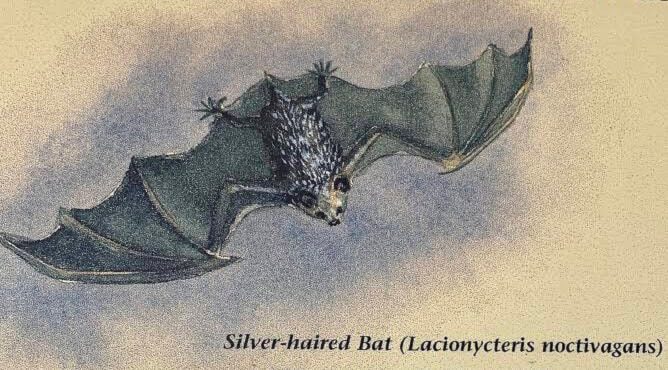By Roseanne Van Ee
Okanagan’s Nature Nut
Editor’s note: This is the first in a two-part series with amazing bat facts
It’s bat season in B.C. They’ve migrated back to B.C. or left their hibernaculas to forage for insects. Most females have babies now.
There are more than 1,400 known bat species worldwide (most in tropical and subtropical areas) living on every continent (except Antarctica) in every type of habitat from desert to forest. That’s just about a quarter of all mammal species.
The largest fruit-eating bats (also known as flying foxes) of Asia, Africa and Australia are the size of cats with two meter wingspans. The world’s smallest mammal is the rare bumblebee bat of Thailand which weighs about as much as a dime.
Our B.C. bats are all insectivores and some of the smallest bats in the world. Most of these bats would fit in the palm of your hand and weigh about seven loonies. They use echolocation to find and catch flying insects and occasionally glean other invertebrates like spiders, scorpions, millipedes, etc. The little brown myotis is B.C.’s most common and well-studied urban bat.
Bats are the only group of flying mammals and are strictly nocturnal foraging for food at night.
Their order name chiroptera means hand-wing.
Their amazingly strong wings are double-layered thin membranes of durable skin stretched from their arms, hands and elongated fingers down across their legs and to the tail. They can hover, fly fast and remarkably manoeuvre. A clawed thumb, at the top of each wing, helps bats climb up trees, cliffs, walls, etc. Bats’ legs, knees and feet with long clawed toes are backwards for hanging upside-down, grooming, and along with the tail, supports flight and catching flying prey and young when born.
READ MORE:
While flying, bats emit multiple quick, high-frequency, ultrasonic echolocation pulses of air to zero onto insects and navigate at night. The airwaves hit the insect and echo back. They speed up their pulses as they close in on their prey. To understand this – hold your hand a few inches from your mouth and say “P.” You can feel the air pulse, but can’t hear the echo.
Bats big ears help hear sounds such as the echoes of their pulses, fluttering of moth wings, movement of insects in air or on vegetation, and other bats. So how do bats catch flying insects when their hands are wings? They swiftly scoop them up with their tail membrane or a wing into their mouth, bite, then chew quickly. Sometimes this causes them to tumble down for a bit.
Like bears, in our temperate climate bats may hibernate for more than seven months if left undisturbed. Their normal 38C body temperature can drop to a few degrees above zero. They arouse a few times during hibernation to stretch and move, but can starve if awakened too many times during the winter causing them to lose insulating fat before spring. Their brown body fat keeps them from freezing and they use it to warm their bodies up in about 30 minutes.
Adult females over one year old mate in the fall and store sperm in their uterus while hibernating, then fly off to maternity colonies with other females in spring. Gestation is 7-10 weeks. Most of our bats give birth in June or July to only a single pup.
Baby bats are born helpless, furless and blind, but are big – about 30 per cent mom’s size, and they grow rapidly. Mom nurses her baby who holds on while she’s roosting. No dads are around. There’s a huge mortality rate among weaned young making bats very vulnerable to extinction. Insecticide use is especially harmful to bats.
You can watch bats in action and help with the provincial count at two local events this week. Allan Brooks Nature Centre hosts a limited bat workshop and count Thursday, 7-10 p.m., sign up at abnc.ca. Fintry Provincial Park is also hosting a bat count Saturday, June 11, 8-10:15 p.m., contact okanagan@bcbats.ca.
Or if you have bats on your property, count them and call 1-855-922-2287 or visit bcbats.ca.
Participants help count bats as they fly out of their roost for the night to hunt insects. The data collected is used for bat conservation.
Part 2 with amazing bat facts coming soon.
Roseanne Van Ee enthusiastically shares her knowledge of the outdoors to help readers experience and enjoy nature. Follow her on Facebook.
READ MORE:
newsroom@vernonmorningstar.com
Like us on and follow us on



